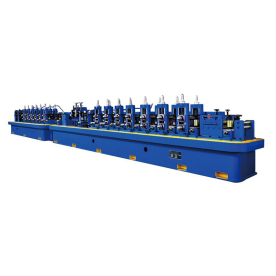[Ferrit]Ferrit: Exploring the Fascinating World of a Unique Element and Its Versatile Applications in Modern Technology
News 2024-8-13
Ferrit, often referred to in various contexts including chemistry and industry, is a term that might not ring a bell for many. However, it represents a unique and intriguing element that plays an essential role in various applications. In this article, we delve deep into the world of Ferrit, uncovering its properties, uses, and significance in contemporary technology.
What is Ferrit?
Ferrit, derived from the Latin word "ferrum" which means iron, primarily refers to an iron-based material characterizing magnetic properties. Although Ferrit itself may not be an element, it usually pertains to the ferrite ceramic material composed of iron oxide combined with additional metallic elements such as barium, nickel, or zinc. These ferrites possess extraordinary magnetic and electrical properties making them invaluable in numerous applications—especially in the world of electronics.
The Properties of Ferrit

Ferrit: Exploring the Fascinating World of a Unique Element and Its Versatile Applications in Modern Technology
Furthermore, ferrites are typically made into ceramic forms, which are hard, brittle, and chemically stable. These ceramically-made ferrites can be manufactured in various shapes and sizes, offering versatility across different industries. The magnetic properties of ferrites can also be finely tuned through the manipulation of their chemical composition and manufacturing processes, yielding diverse types such as soft ferrites and hard ferrites. Soft ferrites are primarily used for applications requiring high conductivity, while hard ferrites are used in permanent magnets.
Applications of Ferrit
The applications of ferrit materials span multiple fields, from electronics to telecommunications, healthcare, and beyond. One of the most common uses of ferrite is in the manufacturing of inductors and transformers. These components are essential for converting and transferring electrical energy in circuits, especially in devices such as computers and smartphones. The efficacy of ferrites in these components allows for compact designs without sacrificing performance, which is particularly crucial in modern miniature electronic devices.
In telecommunications, ferrite is used in various radio-frequency (RF) applications. Ferrite cores are integrated into antennas, enabling efficient signal transmission and reception. Moreover, ferrite-based components are critical in the development of Wi-Fi routers and mobile devices, ensuring seamless connectivity in our increasingly wireless world.
Beyond electronics, the medical industry has also adopted ferrite in magnetic resonance imaging (MRI) technologies. Ferrite materials are employed in magnetic field devices and help enhance the quality of diagnostics. Their ability to create strong magnetic fields makes them crucial in machinery that requires precise imaging.
Additionally, ferrites can also be found in other innovative applications, such as noise reduction devices used in power supplies and audio systems. The unique properties of ferrites allow for the suppression of electromagnetic interference, leading to cleaner, clearer audio signals and more stable electronic operations.
Environmental Impact and Sustainability
As the global market increasingly emphasizes sustainability and environmental consciousness, research around ferrite materials is evolving. Many industries are exploring eco-friendly methods for producing ferrites, aiming to reduce material waste and energy consumption in manufacturing processes. Recycling ferrite components used in electronics is also gaining traction, aligning with the broader goals of minimizing environmental footprints and embracing circular economy principles.
Furthermore, the potential for ferrites in renewable energy applications is worth noting. Ferrite-based magnetic components are being investigated for use in wind turbines and electric vehicles, demonstrating the versatile and evolving nature of this material.
Conclusion

Ferrit: Exploring the Fascinating World of a Unique Element and Its Versatile Applications in Modern Technology

